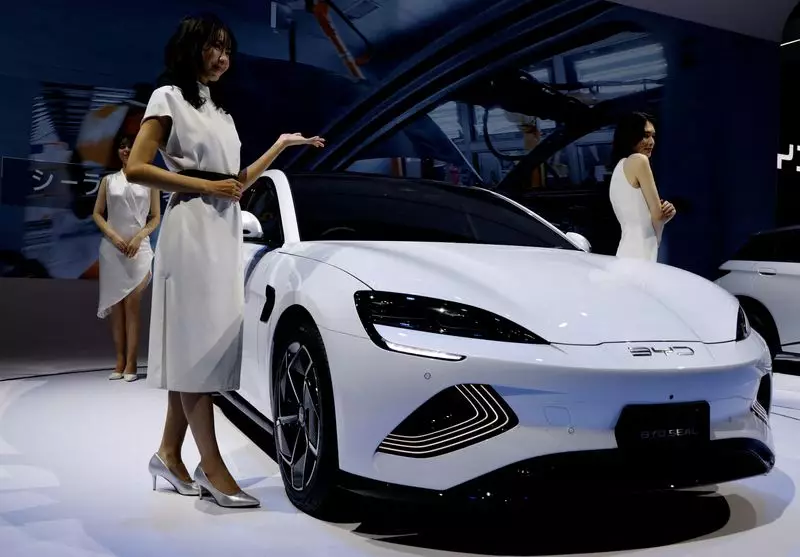Europe’s automakers are gearing up for a challenging year as they navigate the competitive landscape brought in by their leaner Chinese rivals. These Chinese manufacturers are introducing cheaper electric vehicles to the market, posing a significant threat to the traditional European automakers. The difference in approach between the two sets of automakers will be evident at the Geneva car show, where European legacy companies and Chinese EV-focused manufacturers will showcase their latest models.
One of the major challenges for Europe’s automakers is the pressure to cut costs for electric models, especially amidst supply chain disruptions caused by the pandemic. With many suppliers already struggling and laying off workers, automakers are facing the dilemma of squeezing more out of their suppliers. Unlike Chinese manufacturers that have opted for vertical integration, European automakers rely on external suppliers for different components, which adds to their production costs.
The shift towards electric vehicles has put significant pressure on the profit margins of European automakers. The slower-than-expected adoption of EVs has left these companies juggling between dual supply chains for fossil-fuel and electric vehicles. The recent decline in fully-electric car sales in the EU further underscores the challenges faced by automakers. As a result, the profit margins of European automakers are likely to be heavily impacted as they try to keep up with their Chinese rivals.
The recent disruptions in the automotive supply chain have added to the woes of Europe’s automakers. The semi-conductor shortage forced automakers to prioritize production of high-margin models, leading to reduced revenue and margins for suppliers. Some legacy suppliers have already announced or warned of layoffs, indicating the strain on the industry. While larger suppliers may be able to adapt to the changing landscape, smaller companies are at risk of going out of business, further complicating the situation for automakers.
As Europe’s automakers navigate the challenges posed by Chinese competitors and supply chain disruptions, they face a delicate balancing act. On one hand, they need to cut costs to remain competitive, but on the other hand, pushing suppliers too far could have detrimental effects. Automakers may need to step in to support struggling suppliers to avoid disruptions in their production processes. Failure to strike the right balance could result in suppliers seeking alternatives or, worse, going out of business.
The road ahead for Europe’s automakers in the electric vehicle race is fraught with challenges. The competition from Chinese manufacturers, supply chain disruptions, and the pressure to cut costs are just some of the hurdles they must overcome. By carefully navigating these challenges and finding the right balance between cost-cutting and supplier support, European automakers can hope to remain competitive in the evolving automotive landscape.

